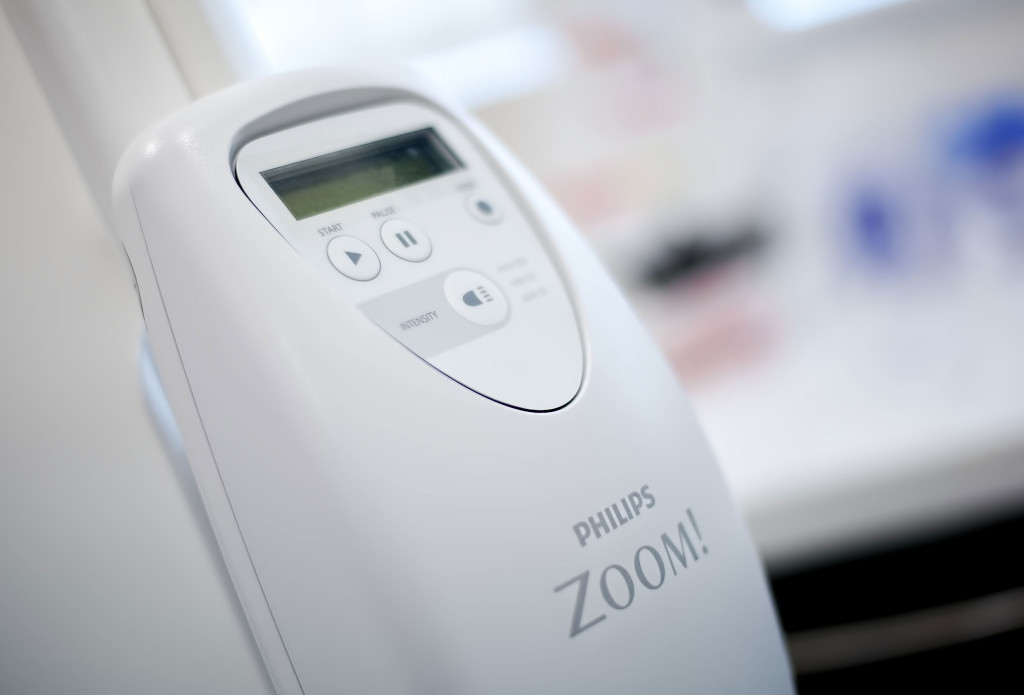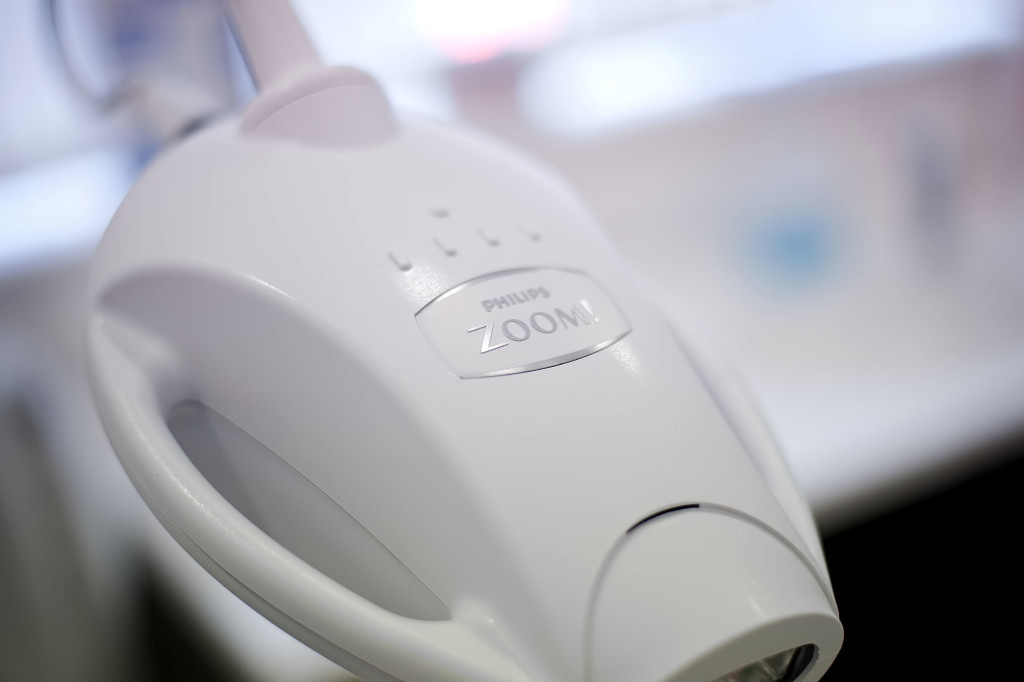Teeth Whitening
Teeth whitening is the process of removing stains and discolouration from teeth through a bleaching process to make them look “whiter”. For heavily stained teeth, a procedure as simple as a scale and polish from a dental hygienist can significantly improve their appearance and make them look “whiter”.
What are the different types of teeth whitening available?
Laser Tooth Whitening
Laser tooth whitening or in-surgery whitening is a procedure that takes place at the dental practice and uses a light-activated bleaching gel to whiten your teeth. The procedure usually takes approx 1 -2 hours and produces instant whitening results. Many dentists recommend that laser whitening should be followed up by professional home whitening.
The Laser Tooth Whitening procedure
Before the teeth whitening process is started a dentist or a hygienist will thoroughly clean the teeth, removing any surface stains and tartar. This procedure is commonly referred to as a scale and polish.
- The next step will be for the dentist to make a record of the shade/colour of the teeth before the procedure. This is either recorded using a tooth coloured shade guide/chart or by taking a digital photograph of your teeth.
- The area is then prepared for the procedure. The bleaching compound usually contains a high concentration of peroxide (up to 6%) and so the dentist will usually place some form of protection around the gums so that only the teeth are exposed to the compound.
- It is very important that your dentist isolates your gums and lips with a protective material in order to avoid any potential damage or burning.
- The whitening gel is then applied to the surface of the teeth and exposed to a light or laser, which activates it. After approximately 15 minutes the gel is removed and the process repeated another 2 times. During the procedure some people may feel sensitivity in their teeth, which are described as short-lived shooting pains.
- The dentist will finally wash off the whitening gel and remove any gum protection before evaluating the final result by taking a photograph or using a shade chart. The results are usually quite dramatic and can often be up to 10 shades lighter. A kit for home whitening may also be provided with custom trays and professional whitening gel.
Many patients’ teeth are quite sensitive immediately following this procedure and it is advised to try and avoid hot or cold drinks for a while. Sensitivity rarely lasts more than 48 hours, if symptoms persist for longer than this then contact your dentist.
How much whiter will my teeth look?
This varies from individual to individual, and also depends on the type of whitening system used. Some people respond very well to teeth whitening and have dramatically whiter teeth as a result, whereas others may notice very little difference at all. People with heavily stained yellow teeth tend to have more dramatic results than those with slightly discoloured teeth. Your dentist will be able to advise you on the likely results following a consultation.
Does it hurt? What are the side effects of teeth whitening?
Some people experience no pain or sensitivity with their teeth. However, the majority of people will experience some kind of sensitivity either during and/or after the initial treatment. This is usually described by patients as sporadic, sharp shooting pains coming from their teeth. This should settle down after approximately 48 hours though. It is advisable to avoid hot or cold food and drinks within the first 48 hours of your whitening treatment.


